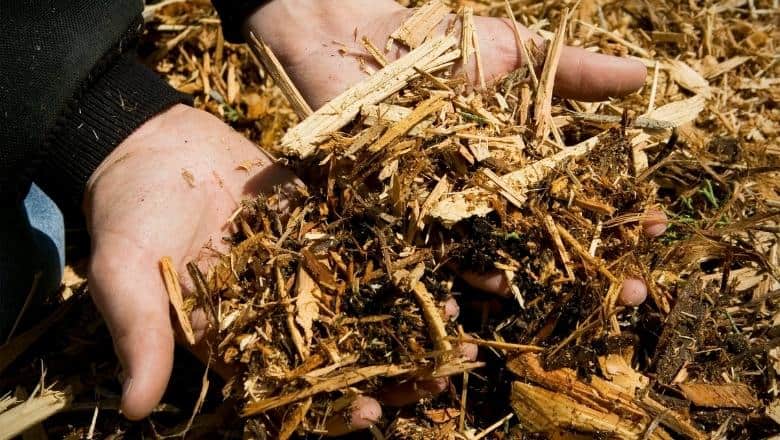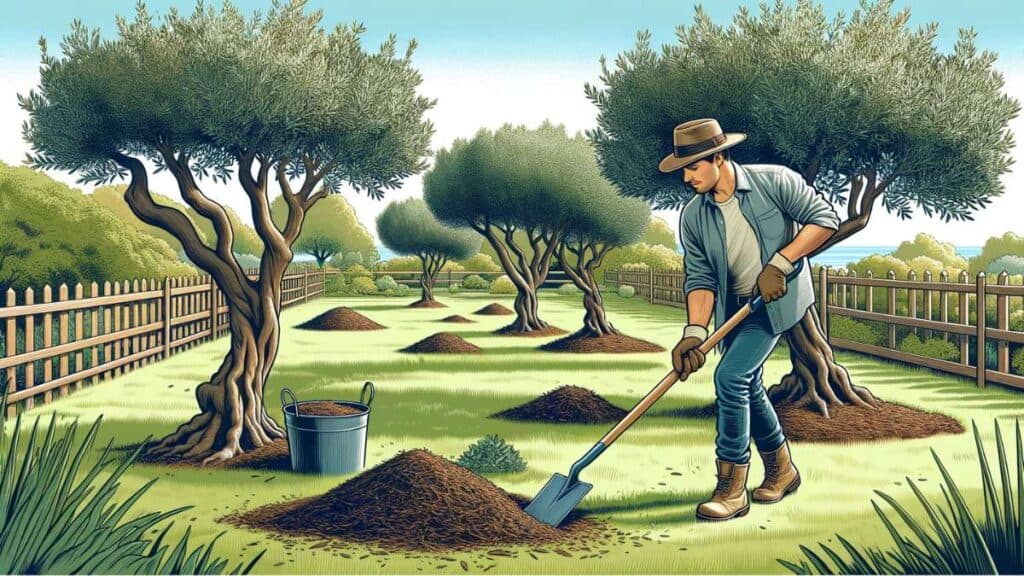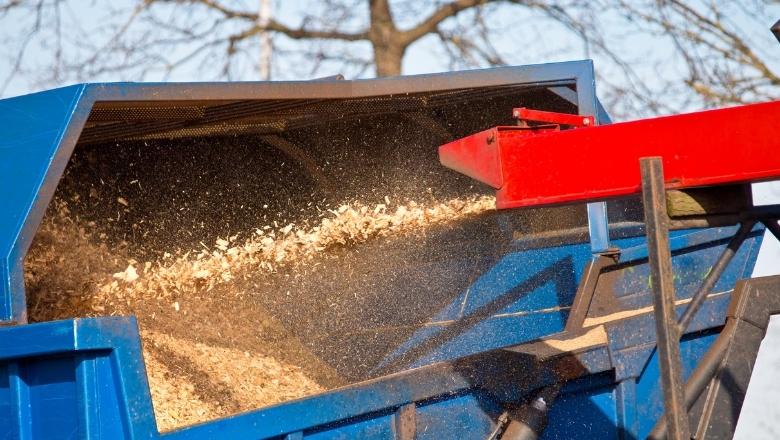Mulching Olive Trees: A Complete Guide
Olive Knowledge is a part of Amazon Associates. As an Amazon Associate, we earn from qualifying purchases. Read our Affiliate Disclosure to learn more.
Mulching olive trees isn’t extremely popular amongst olive growers, yet there are many reasons why you should start mulching olive trees, especially if you live in a hot climate. In this article, I’ll show you everything you should know about mulching olive trees.
Key Takeaways:
- Mulch retains soil moisture, reducing water needs.
- Mulching inhibits weed growth.
- It helps maintain soil temperature.
- It enhances soil quality with nutrients.
What Is Mulch?

Mulch is material that’s spread over the surface of the soil, and it serves as a cover layer. It can be both organic and synthetic, but since I only recommend you use organic mulches for your olive farm, I’ll stick to it. If you’re still interested in synthetic mulch, check out more info here.
Mulch can be made from many things:
- Leaves
- Olive pits
- Branches
- Bark
- Grass
- Newspaper
- Straw
It’s something that everyone has in the garden, and honestly, it would be a shame to throw these materials away when you have an opportunity to make a high-quality organic mulch for your olive trees.
Why You Should Mulch Olive Trees

There are many reasons why you would want to mulch olive trees. It may be hard for large olive farms, but for small olive growers like you and me, it shouldn’t be a problem.
The most important benefits of mulching olive trees:
- Mulch keeps the soil moist. During hot summer days, in Mediterranean-like climates, there aren’t many showers of rain, which can be fatal for olive trees. By mulching them, you’ll keep the soil moisture for longer, which is great and may also reduce your water spending when watering olive trees.
- It prevents the growth of weeds. By adding a layer of mulch under olive trees, you’ll prevent weeds from growing quickly. Actually, they probably won’t grow at all.
- Mulch maintains the temperature in the soil. During extremely hot or cold days, mulch will prevent soil from suddenly changing temperature. That way, it helps the tree to stay healthier and not get shocked because of extreme temperatures.
- It improves the quality of the soil. Maybe one of the most important things is that the mulch will improve the quality of the soil by feeding it with micro and macronutrients. So, it may serve as one kind of fertilizer or compost, too.
How To Make Mulch From Olive Tree Branches

When pruning olive trees, you’ll have many twigs and branches cut off, and the worst thing to do is to fire them. You can use olive branches in many ways, but they’re perfect to be used as mulch, and now I’ll show you how to do it.
Steps To Make Mulch From Olive Tree Branches:
- Gather all the twigs and branches and put them in one spot
- Get a wood chipper/mulcher (check out my recommendation below)
- Grind all the branches
- Keep the mulch on the pile
- Spread the mulch under the trees
If you’d like to create compost from mulch, it’s possible. However, it’ll have to stay on the pile for a few months. You’ll have to make sure it’s wet, and you’ll also have to turn it every two weeks. Here’s a great quick guide for making compost from mulch.
As you can see, the whole process is straightforward, and all you need is a little bit of will and a wood chipper. In my opinion, it’s still a much easier, quicker, and cheaper option than burning all the twigs and branches that are left from pruning olive trees.
Also, if you have grass or twigs and branches from other types of trees, you can also use them to improve the quality of the mulch. So, use everything you’ve got.
How To Spread Mulch Under The Trees
When everything’s mulched, you can then start to place mulch under the trees. It’s pretty straightforward, and it’s hard to mess something up.
Here are a few quick guidelines for applying mulch under olive trees:
- Mulch in late spring to help with hot days and during the winter to help with very cold days
- Don’t put mulch over weeds, weeds should be removed first
- Place mulch to cover everything below the olive tree canopy area
- Mulch should completely cover the soil, so make sure to apply a thick layer
- Evenly spread the mulch by using rakes
As you can see, it’s very simple, and it’s pretty quick, actually. Mulch isn’t weighty, so it’s very easy to spread around. Now that everything’s finished, olive trees will get all the benefits from the mulch, which will hopefully increase the olive yield.
Frequently Asked Questions
-
Should you mulch around olive trees?
You should mulch around olive trees. Mulch prevents weeds, adds nutrition to the soil, keeps the soil moist during hot summers, and prevents damage from extremely hot or cold temperatures.
-
How thick should mulch be?
Mulch should be anywhere between 10cm to 20cm thick. If it’s too thin, you won’t get so many benefits. However, even a thin mulch is better than nothing.
-
When should I remove the mulch?
If there is too much rain, it would be best if you remove the mulch since it’ll keep too much moisture in the soil, which may be bad for olive tree roots.
-
What is the best mulch for olive trees?
The best mulch for olive trees is the one from olive tree branches, pits, and leaves. However, you can always add some vineyard branches, grass, lucerne, or soybeans to increase the number of healthy nutrients in the mulch.
-
Is organic mulch better than synthetic one?
Organic is always more beneficial and healthier than synthetic. That’s also true when we talk about mulch. So, if you can, always aim for organic mulch instead of synthetic one.
Similar Articles For You:

